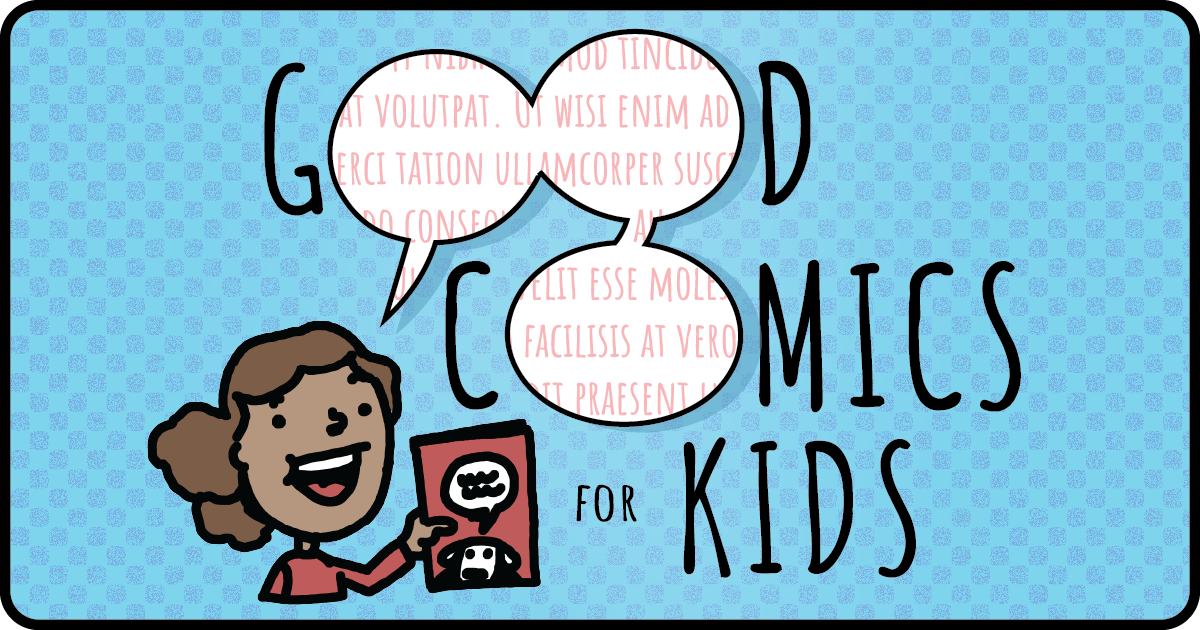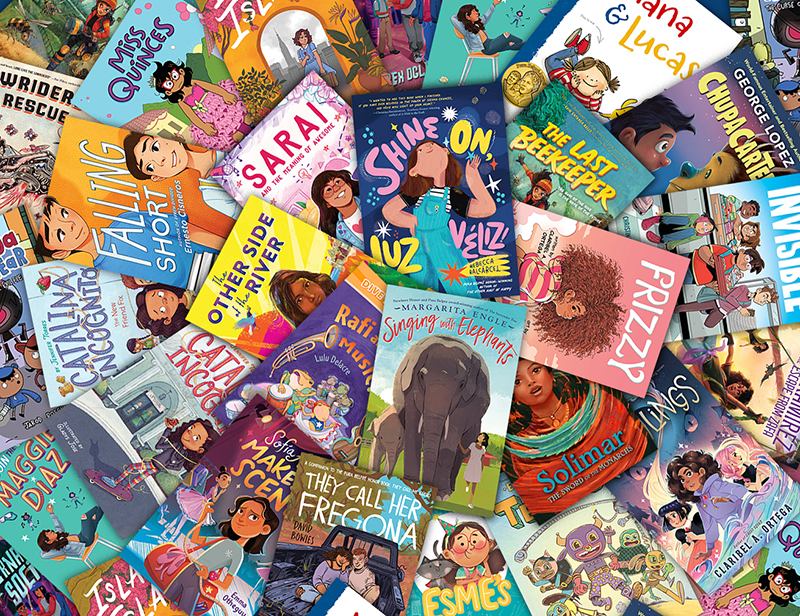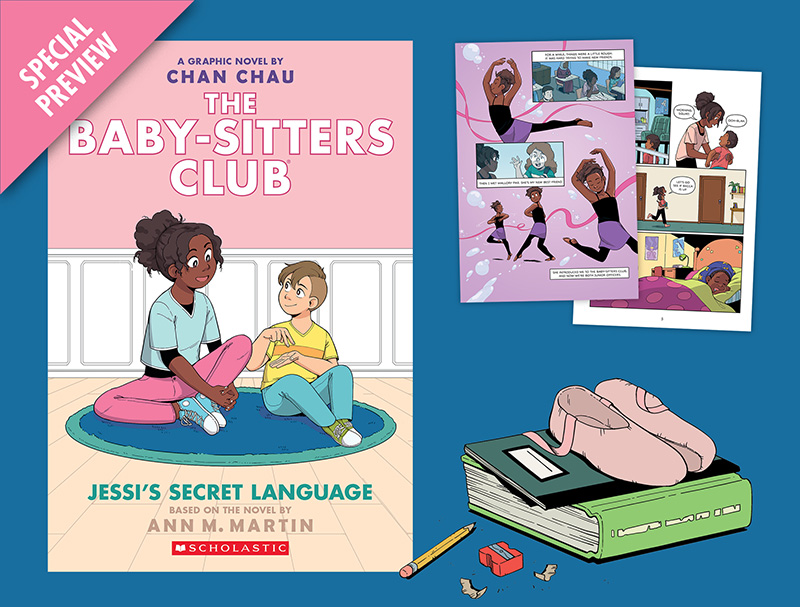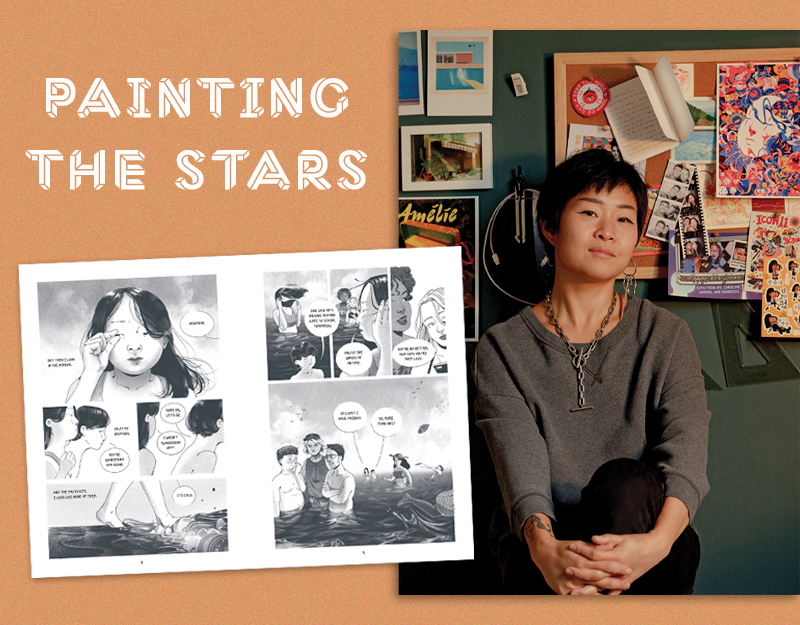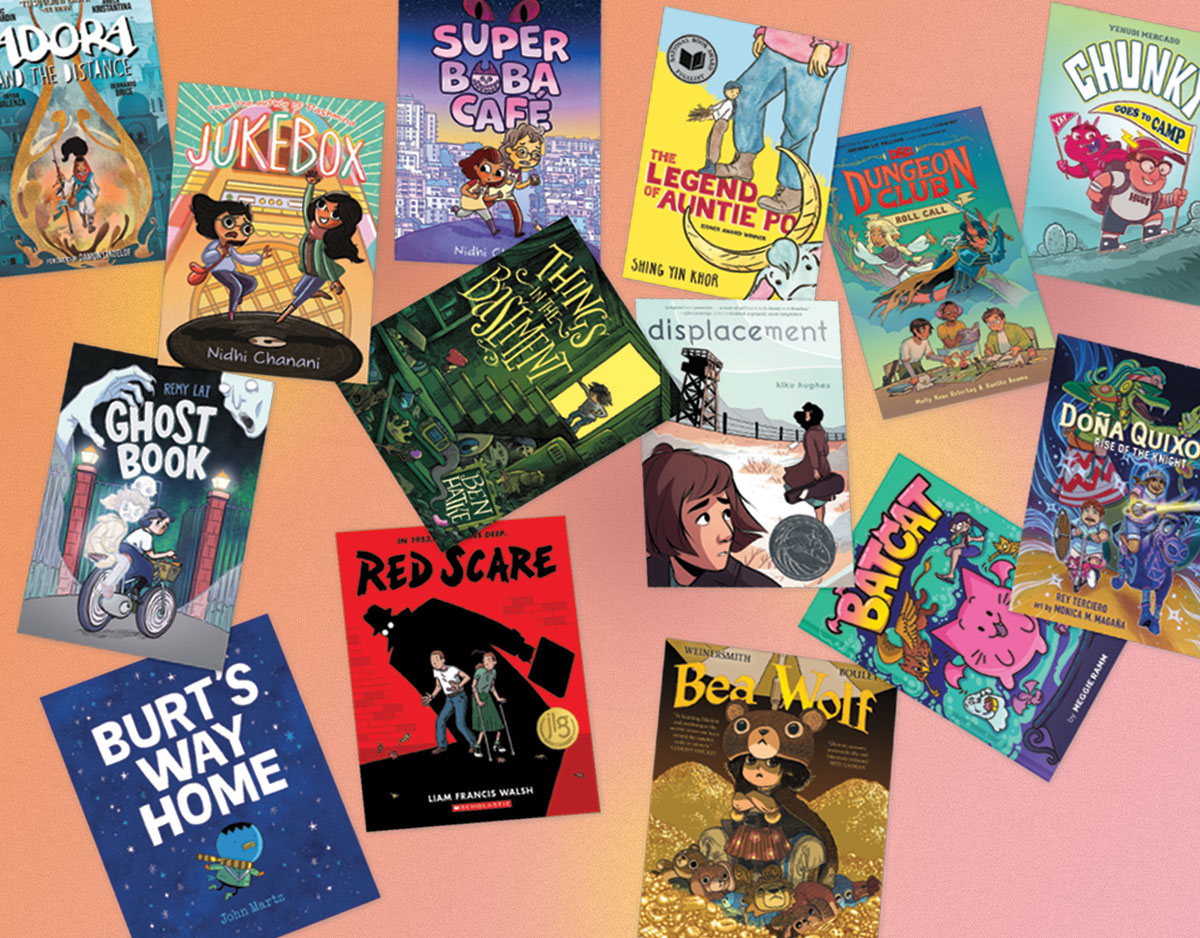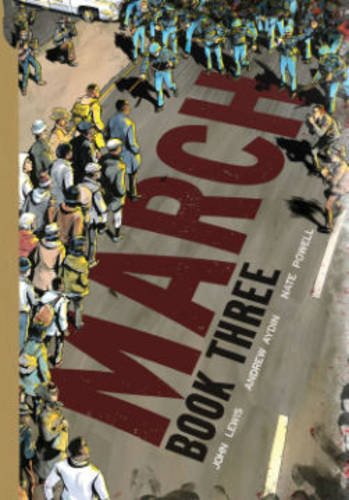
Review: ‘March’ Book 3
Volume One of March opens on the Edmund Pettus Bridge. John Lewis and Hosea Williams are leading the protesters and facing the state troopers. Hosea Williams turns to John Lewis and asks: “Can you swim?”
“No,” answers John Lewis.
“Neither can I,” says Williams. “Then we better pray.”
This dramatic scene is powerful and stays with readers, but at the conclusion of volume 1, the story is still years away from the Selma protest, which became known as Bloody Sunday. But finally, readers will be able to read the conclusion of these events.
ADVERTISEMENT
ADVERTISEMENT
 March: Book Three
March: Book Three
By Congressman John Lewis, Andrew Aydin. Nate Powell
Top Shelf Productions. 2016. ISBN 978-1-60309-396-5HC, $29.99. 256pp.
Grades 7 and up
It’s odd to write “conclusion,” because in light of recent events, with the media spotlight on the deaths of unarmed black men at the hands of police, one wonders how far we’ve come in the civil rights movement. But after reading Representative John Lewis’s story, and looking back at how things were, I felt like we really have come very far, even if there’s still a long road ahead of us.
Volume 3 of March opens with the death of four little girls in the 16th Street Baptist Church in Birmingham, Alabama. The events continue to the 1964 Freedom Summer in Mississippi, where three civil rights workers went missing and later found dead. The story bogs down with the events of the National Democratic Convention and how multiple groups, led by Fannie Lou Hamer and others, tried to be heard and get a seat on the convention floor. Ultimately, leaders felt there would be no progress until the Black vote could be placed.
Lewis talks about his frustration with the movement and his exhaustion and how he took a two-month trip to Africa, where he met Malcolm X. Lewis tells of how the ideologies of SNCC were moving from his own way of thinking, which led him to becoming more independent. But finally the story marches on to Selma, where Lewis is badly beaten on Bloody Sunday. Despite his injuries, Lewis joins protestors in the final March, where protestors are at last able to go to the Capital steps. And the book concludes on a triumphant note with the 1965 passage of the Voting Rights Act in Congress, which ultimately told states that they cannot deny anyone the right to vote.
Powell’s cinematic artwork makes much of the text come alive. As a story, there were many times the text got heavy and a bit stagnant, but Powell’s black and white artwork moved the action along. At the climax of the story, there are scenes that are mostly wordless that bring a tremendous energy and drama to the story. Readers won’t hurry through the images but likely will stop to savor the nuances on the page. The images and words are a perfect marriage once again.
I was thrilled in May when I heard the NYC Department of Education would be suggesting March as a text for eighth graders as they learned about the Civil Rights Movement. This trilogy is a powerful way to introduce the topic to young people. And in my experience, young students don’t know a whole lot about the Civil Rights Movement with the exception of Martin Luther King Jr. and Rosa Parks. The history is so much more than those two historical figures.
Finally, I can sit and re-read all three volumes as one story, instead of three separate entities, and I look forward to doing that again. Don’t miss the conclusion of this series. It’s a must read for teens and adults.
This review is based on a complimentary copy supplied by the publisher. All images copyright © Top Shelf Productions.
Filed under: Graphic Novels, Reviews
About Esther Keller
Esther Keller is the librarian at William E. Grady CTE HS in Brooklyn, NY. In addition, she curates the Graphic Novel collection for the NYC DOE Citywide Digital Library. She started her career at the Brooklyn Public Library and later jumped ship to the school system so she could have summer vacation and a job that would align with a growing family's schedule. On the side, she is a mother of 4 and regularly reviews for SLJ. In her past life, she served on the Great Graphic Novels for Teens Committee where she solidified her love and dedication to comics and worked in the same middle school library for 20 years.
ADVERTISEMENT
ADVERTISEMENT
SLJ Blog Network
One Star Review, Guess Who? (#206)
“Complex social dynamics exist in the simplest of conflicts.” A Kyle Lukoff Interview on Sorry You Got Mad
Navigating the High School and Academic Library Policy Landscape Around Dual Enrollment Students
Take Five: New Middle Grade Books in July
ADVERTISEMENT

